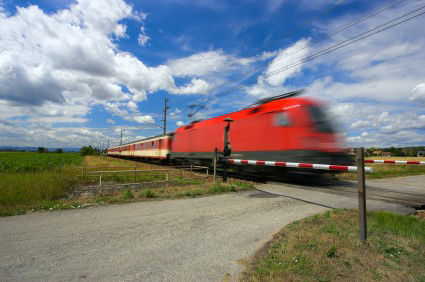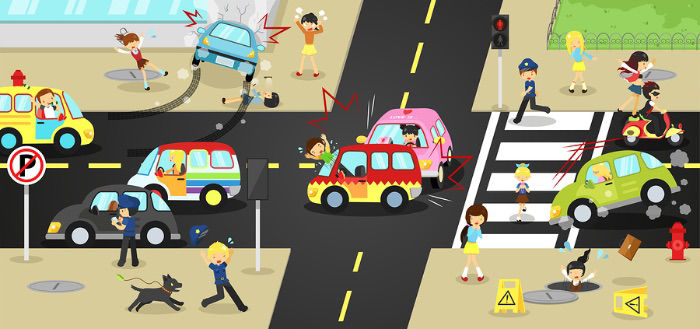NHSA Blog
Blog posts of '2022' 'June'
7 Important things to document when in a collision
.jpeg)
Getting into an accident is one of the most unnerving and stressful situations you can experience. It can be difficult to remain calm and properly handle the situation when under duress. Having a plan to document what happened at a collision using your cell phone can help navigate a challenging situation in the best way you can. After alerting the authorities and confirming the safety of all involved take video and pictures of the following items:
- Show the crash scene from multiple angles.
- Take both wide shots and close-ups.
- Indicate the direction in which the vehicles were traveling.
- Try to capture the visibility, weather conditions, and traffic density.
- Capture any visible damage to each of the vehicles involved.
- Take pictures of the driver’s license of each driver involved.
- Take pictures of the insurance and registration of each driver involved.
Do Not
- Take pictures of any injuries in the accident
- Put yourself in harm’s way, such as walking out into moving traffic
- Get in the way of first responders.
At NHSA, our goal is to prepare individuals to be safe and successful drivers. We offer a free practice test for a driving permit in all 50 states. We also offer online driver education courses for those seeking their driver’s license as well as an array of defensive driving and basic driver safety courses. Visit us to see what driver courses are available in your state!
Driving safely at railroad crossings

According to recent data compiled by the Federal Railroad Administration (FRA), in 2013 there were 2,087 vehicle-train collisions in the United States, resulting in 251 deaths and 929 injuries. Similar data from 2011 reported 2.059 collisions with 250 fatalities and 1,041 injuries.
Being aware of your surroundings and following a few basic rules will help you get across a railroad crossing safely.
1. Slow down when approaching a railroad crossing. Look for warning lights or a lowered gate. Even if the lights are not flashing, and the gate is not lowered, look both ways and listen to make sure no train is coming before you attempt to cross the tracks.
2. As you get near the crossing, roll down your windows to hear if a train is approaching more easily.
3. Stop no closer than 15 feet from a railroad crossing if a train is approaching.
4. Only cross the tracks at designated areas.
5. When there are multiple tracks and a train has already passed, check in both directions to make sure that no other trains are coming on additional tracks before attempting to cross.
6. Carefully read any posted signs and follow the instructions provided.
Even if you cross the same set of tracks each day, never assume that the tracks will be clear. A quick glance in each direction can be a lifesaver! Following these simple reminders will provide an extra layer of safety and help you arrive safely.
At NHSA, our goal is to provide online driver education courses that equip all drivers to be safe drivers. Whether you are a teen seeking a learner’s permit, or an adult driver seeking a basic driver safety course, check us out online to see what courses are available in your state!
Understanding who has the right of way

Safe drivers understand that driver safety involves being aware of their surroundings at all times. Understanding the “rules of the road”, including a keen awareness of who has the right of way in all situations will improve safety and reduce the risk of an incident. Take note of who has the right of way in the following scenarios.
1 At stop signs
If you are at a stop sign you should come to a complete stop and then allow other cars, pedestrians, and cyclists to go. The first driver to stop at a 4-way stop should be the first to proceed. If you happen to arrive at the same time as another car then the car on the right should go first.
2 Intersections with no traffic signs or signals
When entering this type of intersection, you should yield to vehicles that are already in the intersection. Before turning left, you should yield to any vehicle that is coming from the opposite direction.
3 Driveways, alleys, and roadsides
If you are entering or exiting any of these you need to yield the right-of-way to any vehicle, cyclist, or pedestrian that is using the road or sidewalk.
4 Yielding to emergency vehicles
The law requires drivers to yield to any authorized emergency vehicle. If the driver is unable to move over or is on a single-lane road they must slow down to allow the emergency vehicle to pass.
5 Yielding to pedestrians
You must always allow pedestrians to have the right of way. Be particularly alert for those who may be blind. It is often possible to identify blind pedestrians by their use of a guide dog or a white cane.
While these examples are not all-inclusive, they can help you to understand what right-of-way involves and how yielding to others on the road can save lives. Stay alert! To lessen the risk of a collision, you should never assume that other drivers would show courtesy or follow the above guidelines.
At NHSA, our goal is to provide the highest quality online driver education training for teens and adults. Log on and see what courses are available in your state!

